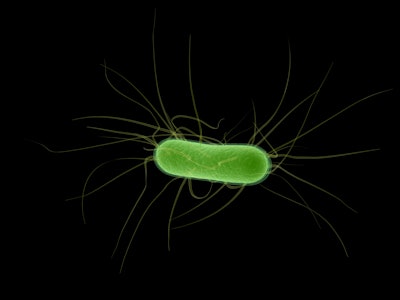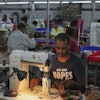
We’ve had the data cloud for some time — now comes data slime. We learned this week that scientists at Harvard were able to store data in Escherichia coli bacteria. Elsewhere, researchers found a second layer of information hidden inside DNA, and Microsoft data scientists used online search to detect pancreatic cancer in some cases even before medical diagnosis.
Data Slime? Scientists Store Data In A Living Bacteria Colony
A team of scientists from Harvard University found a way to store data in bacteria as if they were a living hard drive. Using the CRISPR-Cas gene editor, they stored 100 bytes of data — enough to encode the length of an average sentence — as pieces of synthetic DNA inside E. coli bacteria.
“The results lay the foundations of a multimodal intracellular recording device,” the team wrote in the journal Science, which published the results. Popular Mechanics reported that “these living memory sticks can pass this data on to their descendants, and scientists can later read that data by genotyping the bacteria.”
 Scientist at Harvard turned an E. coli colony into a tiny living hard drive. (Image credit: Getty)
Scientist at Harvard turned an E. coli colony into a tiny living hard drive. (Image credit: Getty)The XXL Prize: MacArthur Foundation Offers $100 Million Prize To Solve One Earth-Sized Problem
The John D. and Catherine T. MacArthur Foundation is already famous for awarding annual richly endowed “genius” fellowships to creative individuals ranging from poets to neuroscientists. Last week the foundation announced it would fund, with $100 million, “a single proposal designed to help solve a critical problem affecting people, places, or the planet.”
The competition, called 100&Change, is open to companies as well as nonprofits located anywhere in the world. “Solving society’s most pressing problems isn’t easy, but we believe it can be done,” said MacArthur President Julia Stasch. “Potential solutions may go unnoticed or under-resourced and are waiting to be brought to scale.”
 The MacArthur Foundation will fund a moonshot idea to help planet Earth with $100 million. (Image credit: Getty Images)
The MacArthur Foundation will fund a moonshot idea to help planet Earth with $100 million. (Image credit: Getty Images)The Origami Of Life: Not Only Genes But Folds In DNA Determine Who We Are
Scientists at the Leiden Institute of Physics have shown that our DNA hides a second layer of information that helps “determine who we are.” Unlike the first, genetic layer, which encodes our genes, the second layer is mechanical and stores information in the way DNA is folded. “Each of our cells contains two meters of DNA molecules, and these molecules need to be wrapped up tightly to fit inside a single cell,” the team wrote in a news release.
“The way in which DNA is folded determines how the letters are read out, and therefore which proteins are actually made. In each organ, only relevant parts of the genetic information are read. The theory suggests that mechanical cues within the DNA structures determine how preferentially DNA folds.” The findings were reported in the journal PLOS One.
 The rigid base-pair model is forced, using 28 constraints (indicated by red spheres), into a left-handed superhelical path that mimics the DNA conformation in the nucleosome. (Image credit: Leiden University)
The rigid base-pair model is forced, using 28 constraints (indicated by red spheres), into a left-handed superhelical path that mimics the DNA conformation in the nucleosome. (Image credit: Leiden University)Online Search Logs Could Detect Disease Before Diagnosis
Data scientists at Microsoft have studied online search data to find early clues to pancreatic cancer. The team “used anonymized Bing search logs to identify people whose queries provided strong evidence that they had recently been diagnosed with pancreatic cancer — a particularly deadly and fast-spreading cancer that is frequently caught too late to cure,” according to a Microsoft blog post.
“Then they retroactively analyzed searches for symptoms of the disease over many months prior to identify patterns of queries most likely to signal an eventual diagnosis.” The scientists reported their findings in the Journal of Oncology Practice. “We found that signals about patterns of queries in search logs can predict the future appearance of queries that are highly suggestive of a diagnosis of pancreatic adenocarcinoma,” the authors wrote. “We showed specifically that we can identify 5 percent to 1 percent of cases, while preserving extremely low false-positive rates (0.00001 to 0.0001).”
 You are what you search. (Image credit: Getty Images)
You are what you search. (Image credit: Getty Images)Luminous Nanoparticles Could Lead To Light-Up Smart Displays, Biosensors
Researchers in Australia have developed light-emitting nanoparticles that can be embedded into glass while preserving its transparency. They say that this “smart” hybrid glass could be “a major step” to 3D display screens, biological sensors and other applications. “Integrating these nanoparticles into glass, which is usually inert, opens up exciting possibilities for new hybrid materials and devices that can take advantage of the properties of nanoparticles in ways we haven’t been able to do before,” said the study’s lead author, Tim Zhao, from the University of Adelaide’s School of Physical Sciences and Institute for Photonics and Advanced Sensing.
 Atoms seen on a nanoparticle with electron microscopy. (Image credit: Getty Images)
Atoms seen on a nanoparticle with electron microscopy. (Image credit: Getty Images)“For example, neuroscientists currently use dye injected into the brain and lasers to be able to guide a glass pipette to the site they are interested in. If fluorescent nanoparticles were embedded in the glass pipettes, the unique luminescence of the hybrid glass could act like a torch to guide the pipette directly to the individual neurons of interest.”
Scientists from the University of Adelaide, Macquarie University and the University of Melbourne collaborated on the project. The research was published in the journal Advanced Optical Materials.























